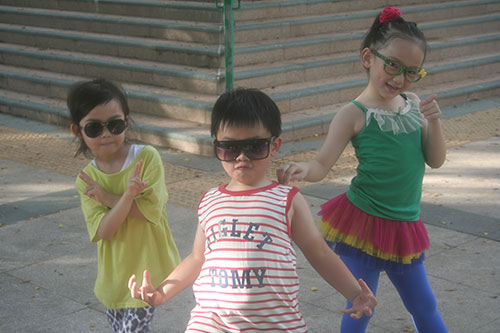Dancing
 The importance of Pre-schoolers’ creative and artistic development & its impact on children’s ea
The importance of Pre-schoolers’ creative and artistic development & its impact on children’s ea


 Creative play is critical for preschoolers’ development. Parents can create a supportive environment for their preschooler by allowing plenty of time for free-flowing creative activities. Many of us might underestimate the impact of artistic development outside of the academic context, for example, dancing can enhance the cognitive acuity and also lead to a range of benefits.
Creative play is critical for preschoolers’ development. Parents can create a supportive environment for their preschooler by allowing plenty of time for free-flowing creative activities. Many of us might underestimate the impact of artistic development outside of the academic context, for example, dancing can enhance the cognitive acuity and also lead to a range of benefits.
Dancing is one type of physical activity that can help strengthen children’s brain development. The most obvious benefit of dance is that it is an active exercise. Dancers move across the floor, stretch, spin, jump and leap into the air. Children who want to become active but abstain from hard-core sports like running and swimming might find their place on the dance floor. In accordance with "Health Status", a renowned and leading website on fitness, a child weighing 90 pounds can burn over 200 calories on the dance floor.
Children who dance tend to build confidence gradually. They become less concerned with body image and more focused on performing for enjoyment. Research shows that dancing promotes discipline: children who dance are more likely to stay on task for other projects. According to the Director of the Boogie Dance Studio1, Mr Tang, dancing not only builds discipline but also improves memory to a certain extent. Research shows that this weekly activity can help kids and even babies exercise their imagination and develop awareness of the world around them. The idea of practicing dancing is "to encourage them to come up with ideas and be creative and, particularly when they're getting older and they've got real personalities," Mr Tang added. While many similar classes in Hong Kong now focus on the learning of musical instruments, he wishes to encourage toddlers "to explore their environment" along with their parents and therefore it can help build up parenting relationship. Mr Tang added, “A 3.5 years old girl, named See Lam, who was very shy when she started to learn to dance, after a few months , she is now very confident and can lead and encourage other children to play and dance together. Dancing can also change the live and character of another child, Sammi, who is a 4.5 years old girl from a quiet to a more active personality” There are a variety of ways to stimulate children’s brain development, just to name a few below:
* Pick a favorite song. Dance with your child together, and see how many moves you can come up with. It’s not only fun, it’s also good exercise.
* Encourage your child to march, jump, hop, slide and twirl. Observing your child’s progress jumping and dancing can tell you how your child’s body awareness and movement are developing. Skipping is a bit tricky for many preschoolers as it usually takes sometime to master the skill. * It’s important to include some fun to appeal to your preschooler’s sense of humor. Make some jokes, and take turns coming up with interesting and funny dancing steps
In addition, learning to dance can also enable children to learn how to express themselves better through non-verbal signs. In many dance classes, kids move in tune to the music. If the song is fast-paced they jump in the air. If the song is a slow melody, the dance may direct them for more intended and carefully orchestrated turns. Kids who learn to move to the tune of music may become more aware of acting similarly outside the dance floor. For instance when a baby is crying, they may soften their body language and voice.
Additionally, it was found that dance can increase the vocabulary of children. Children learn new words with every new move and are expected to use them in daily practice.
In recent years, Mr. Tang, the Center Director, has been appointed as judge by the Inter Varsity Dancesport Competition (IVDC) and the Hong Kong Secondary School Dancesport Competition organized by Youth Outreach.
Naps play an important role in helping babies hang onto what they learn. Now, a new study suggests naptime could have a similar effect on language learning in preschoolers. Researchers stud
Read MoreThe application deadline for the Free Quality Kindergarten Education Scheme is 15 September. Under this initiative, a teacher-student ratio of 1:11 will be required. At least four kindergartens mo
Read MoreHarrow International School Hong Kong is the first international boarding and day school in Hong Kong. It opened in September 2012 and now has a combined roll of 1182 students from Early Years to Y13
Read MoreAmerican School Hong Kong (ASHK) is a non-profit, college preparatory international school in Hong Kong offering a holistic American education taught by qualified North American teachers who inspire,
Read MoreGraded Examination in Spoken English (GESE) Our fun and tailor made Trinity Preparation Classes designed for students wanting to enroll in the Graded Examination is Spoken English (GESE). &nb
Read More6 weeks of exciting activities to entertain and educate 4th July - 12th August 2016 Are your little ones bookworms, or are they always on the go? Do they love animals, or is travelling their thi
Read More





